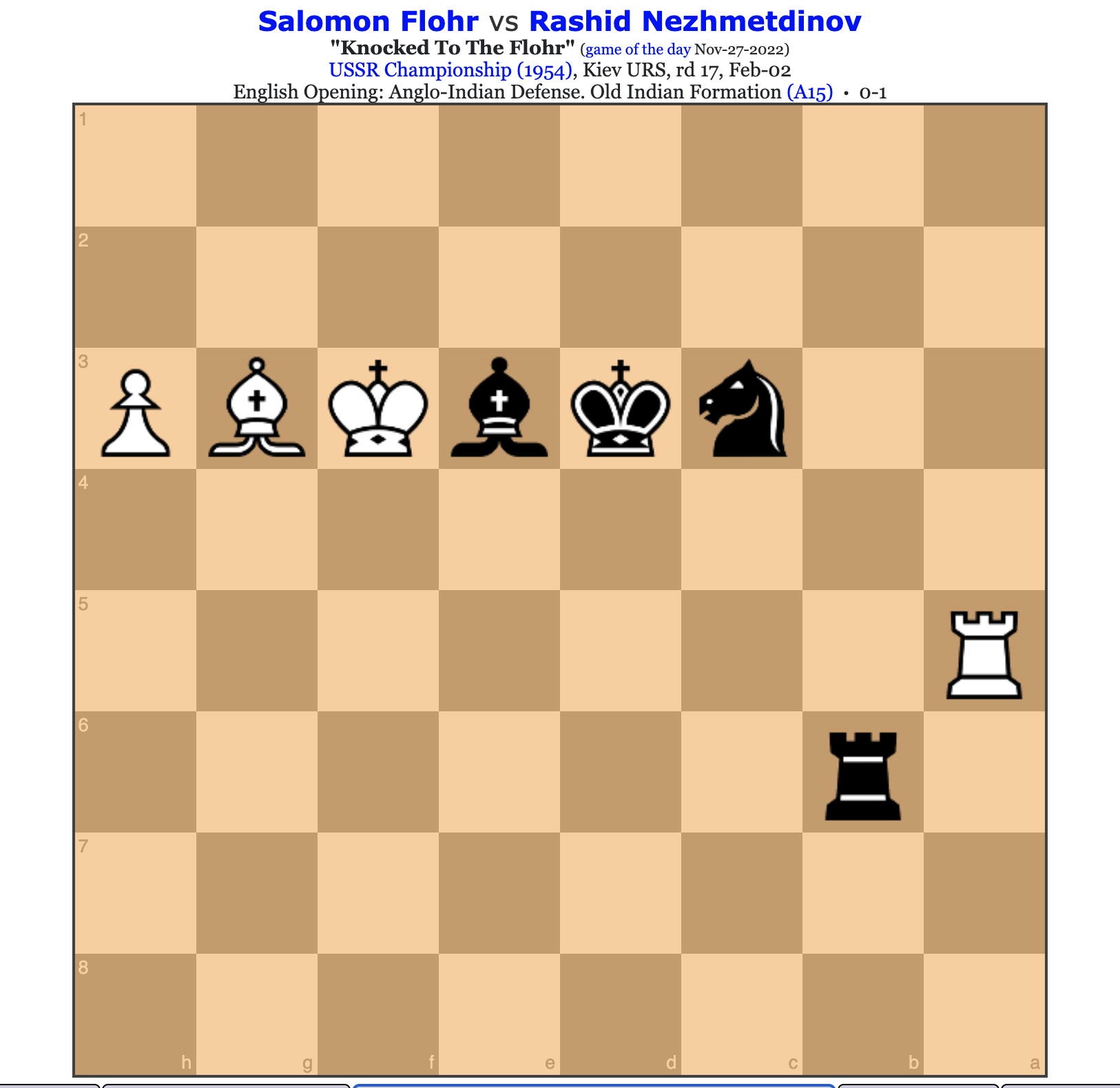
Nezhmetdinov- A Quiet Masterpiece
"His games reveal the beauty of chess and make you love in chess not so much the points and high placings, but the wonderful harmony and elegance of this particular world."
"In Nezhmetdinov, more than in anybody else, you can see the difference between his creative and sporting achievements."
-Mikhail Tal
The following game does NOT appear in Nezhmetdinov's own collection of his best games.
It is, however, featured in the introduction to the book "Super Nezh", by Alex Pishkin.

This game was played in the 1954 USSR Championship. Flohr was past his prime, while Nezmetdinov was starting to reach his playing peak.
Curiously enough, Flohr and Nezhmetdinov have a lot in common. Both lost their parents at an early age. Both came from very poor families. Nezhmetdinov's parents died working the fields; Flohr's parents were murdered.
This game is like a symphony; Nezhmetdinov was known as an attacker, a Romantic who hated "boring" positions, while Flohr was known as a solid player, someone who rarely lost.
The game had a "peaceful" beginning; Flohr played an utra-solid setup, avoiding opening lines in the centre and therefore challenging Black to come up with a winning strategy.

Nezhmetdinov clamped the h3-square, and then maneuvered with his Queen to entice White to move his pawns forward, in order to create some weaknesses in White's camp.
After an early exchange of Queens, which Flohr must have felt as a victory against the "attacking master", Nezhmetdinov had indeed provoked the advance of White's pawns. The first weakness appeared on e3.....

On move 18 White played the move 18.Ba1, which would prove to be a long-range mistake. Why did Flohr make this move? He wanted to play e4, and did not want his bishop to be hanging on b2, so the move ...c5 from Black would not have a big effect on the position.

This subtle detail, the fact that the White bishop on a1 would prove to be very inactive, was somehow overlooked by Flohr, but not by Nezh.
After some moves, Flohr decided to go after the d6-pawn. This prompted Rashid to find a small combination which sacrificed the pawn for some activity. In the next diagram, notice how White is a pawn up, but his bishop on a1 is worse than a pawn!

Two moves later, White won a second pawn, but in the meantime, Black's h-pawn was able to expose the weakness on White's Kingside.....

After Black's 36th move, the position starts showing its true values: Black's initiative is more than worth the pawn. White's bishop is blocked by White's pawn on d4, while White's Knight on d6 is hitting empty air.....

But, still it is Flohr playing White, and he was a great defender.....after move 36, the lack of coordination in White's pieces is telling:

After a few tactical skirmishes in which Black's f-pawn proved to be too strong, White had to sacrifice a piece to win this pawn. So now, Black has an extra piece, but still, how to win?

So Black is a piece up, but White has 3 pawns for the piece, and two of them are connected passed pawns!
Nezhmetdinov forces the exchange of a pair of rooks, and then maneuvers in such a way that maximizes the coordination of his pieces.

More maneuvers, and still not clear how Black will win!

Slowly, patiently, Nezh bring his pieces closer to the White King......

And then, White's King comes forward, and Black places his rook on the f-file, so the White King cannot cross to the other side of the board.....

And the King hunt starts...Nezhmetdinov's technique in hunting down the white King is world-class! On move 83 Black threatens mate for the first time....

After a few more moves, Nezhmetdnov's artistry achieves its aim: mate is inevitable, so White resigned!

Enjoy!
Peace.